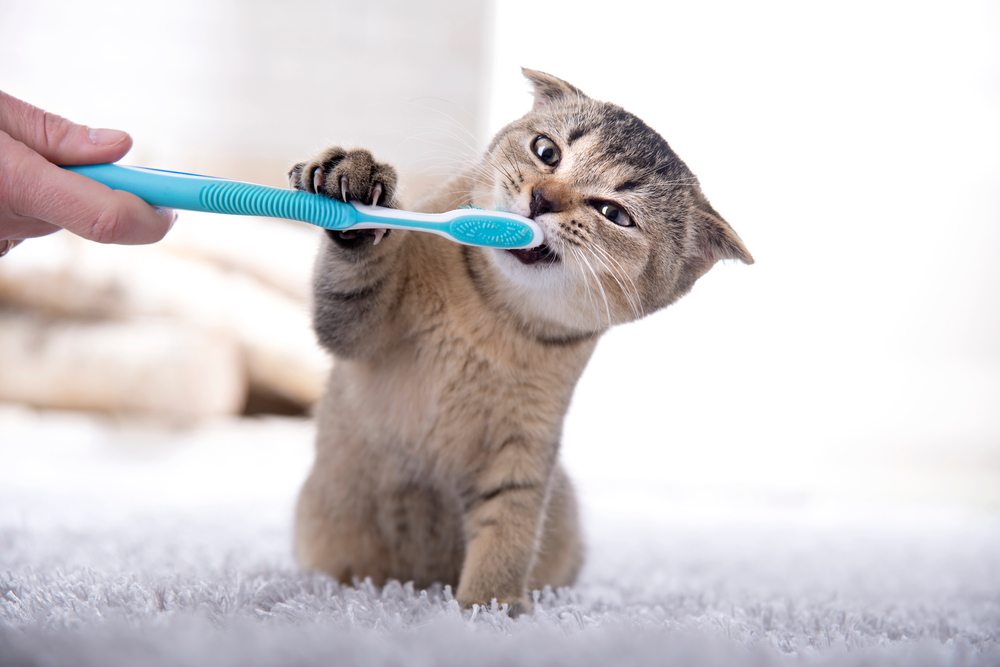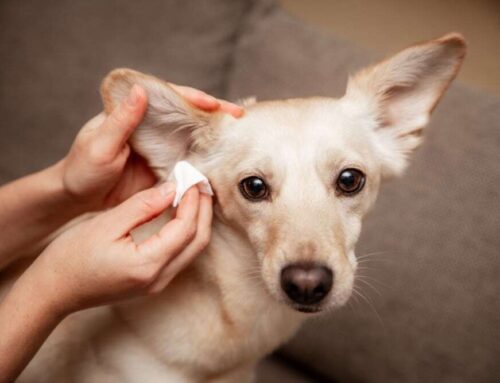You may not think much about your furry pal’s mouth, except when you notice their especially smelly breath, but focusing on your pet’s oral health care is vital for keeping them happy and healthy. And, since your pet lacks the thumbs to hold their own toothbrush and brush their own teeth, and do not have the voice to complain about oral pain, you have to be their dental caretaker. Before tackling your pet’s teeth, brush up on the facts you need to know about your four-legged friend’s dental health.
#1: Almost all pets have dental disease
We’re not talking only about geriatric pets who have never stepped a paw inside a veterinary hospital. By age 3, 80% of cats and dogs are estimated to have some form of dental disease. Periodontal problems are more common in young dogs than in cats, but young cats can be affected by feline odontoclastic resorptive lesions and stomatitis. So, although your pet still acts like a puppy or kitten, they can already be silently suffering from dental disease.
#2: Dental disease affects more than your pet’s mouth
That plaque and tartar you see building up affects much more than your pet’s breath and teeth. The oral bacteria associated with plaque and tartar not only cause gingivitis, but also can sneak into inflamed gum tissue, infiltrate your pet’s bloodstream, and travel to the heart, liver, and kidneys. Oral bacteria especially enjoy latching onto the heart valves and causing heart disease, and can lead to widespread, systemic infection if not treated.
#3: Dental disease can be difficult to detect in pets without knowing the signs
You know your furry pal doesn’t complain about anything except an empty food dish, so detecting dental disease can be challenging. Pets are naturally predisposed to hiding signs of pain and illness, so you may not realize your four-legged friend has dental disease until it has become quite advanced. Stop dental disease in its tracks by closely monitoring your pet for the following signs:
- Brown, grey, or yellow plaque and tartar accumulation on the teeth
- Red, inflamed, or bleeding gums
- Reluctance to chew on toys or hard food and treats
- Dropping food while eating
- Chewing on one side of the mouth
- Pawing at the mouth
- Whimpering, whining, or crying while eating
In some cases, a tooth-root abscess may develop at the carnassial tooth (i.e., the large maxillary premolar) and a lump will form under your pet’s eye on the muzzle. Prevent periodontal problems from escalating that far by watching for tartar and gingivitis, and maintaining an excellent dental care regimen.
#4: Dental treats can only do so much for your pet’s dental health
While dental treats are a great tool for combatting dental disease, all the Greenies in the world aren’t enough to keep your pet’s teeth completely clean. Oral health requires a multimodal approach to ward off dental disease, consisting of at-home care and professional veterinary care. At home, give your pet their favorite dental treats, but combine them with daily toothbrushing, water and food additives, dental wipes, and prescription diets to thwart plaque and tartar accumulation.
#5: Some pets need biannual dental cleanings to remain healthy
Some pets are genetically prone to poor oral health and require more frequent dental cleanings to remain pain- and infection-free. Yorkies, poodles, Chihuahuas, and dachshunds are notorious for poor dental health, and may require dental cleanings as often as twice a year to prevent more serious problems. Cats with feline resorptive disease will also likely need frequent dental cleanings and extractions to avoid the associated pain. During your pet’s wellness visit, we will examine their mouth, grade their dental disease, and estimate when they will need their next cleaning.
#6: Pets need general anesthesia for a thorough, pain- and stress-free dental cleaning

You may have seen anesthesia-free dental cleanings advertised at your local grooming facility, but these cleanings barely scratch the surface of dental disease. No pain medication or sedation is used during these procedures, so pets are restrained while plaque and tartar is chipped away from the crowns of the teeth, leaving behind the bacteria that lurk below the gumline. No dental X-rays are taken to search for hidden problems in the 60% of tooth structure that lies below the gumline, nor are periodontal problems treated, so your pet continues to suffer.
Rather than trying to convince your pet to open wide and say “Ah” as we scrape sharp instruments along their teeth and gumline, we perform dental cleanings only under general anesthesia, which is safer and more effective for your pet. While your pet is unconscious, we can easily reach each and every tooth above and below the gumline, and remove every trace of disease-causing plaque and tartar. We can also easily take dental X-rays and treat any diagnosed problems immediately. Once the procedure is finished, we recover your pet from anesthesia, and they will have remained pain- and stress-free through the help of anesthetic drugs.
Dental health is a vital part of your pet’s overall health and well-being, and without proper care, your furry pal can suffer from pain and infection. Keep your pet’s teeth in tip-top shape by scheduling regular oral exams with your Animal Medical Hospital of Naples veterinarian. Give our team a call to schedule your appointment.







Leave A Comment